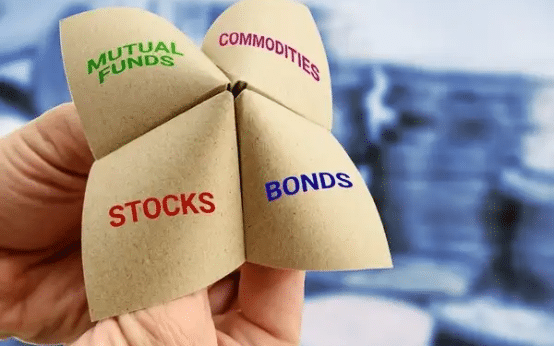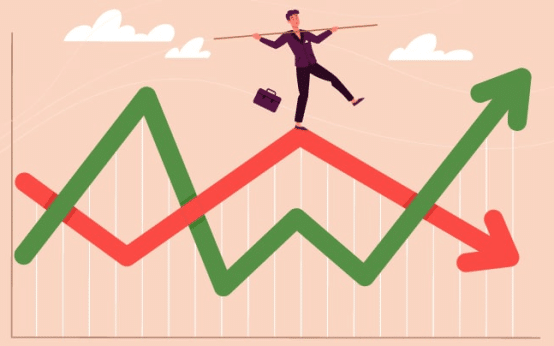Are you starting your journey through the world of investments and passive income? Then you definitely should keep reading. Understanding your risk profile is a fundamental starting point. Otherwise, choosing and keeping an investment is a matter of chance.
Understanding what is a risk profile
There are many personal, financial and socio economic factors that influence an investor’s risk profile. Traditional financial theory considers that investors are completely risk averse, thus will not take on any type of gambles unless the returns compensate them.
Risk aversion is, actually, a fundamental concept to understand where and when to invest. This term refers to how much risk you can actually take, are you someone that would be alright knowing that a good chunk of your investment portfolio isn’t secure? Thus it could either end up in a great success or failure in a few months.

Not many people answer yes to that question. For some investors the simple idea of risk could trigger and anxiety attack. But we don’t usually know our own aversion until actually faced with a risky situation, that’s what assessments and questionnaires about a risk profile are for.
There are other factors that could impact on investment choice, such as:
- Need for liquidity: some investors need to have money ready at hand in case of an emergency. This means that their portfolio can’t be totally allocated in areas that make it hard to retrieve the money immediately, such as trust funds;
- Investment horizon: in how much time do you need to see returns for your investments? Short term returns are widely different than long term returns in most investment options;
- Income: depending on your income you might be able to invest large sums in stocks, while other people should look for ETFs to make better use of their limited assets.
The risk-reward concept in finances
Anytime you invest money there is a risk that you might not get it back. Some options are really low risk, meaning this chance is there, but it’s so small you can forget about it most of the time. A high yield savings account is a good example.
Other investments are under constant influence of the market, meaning their returns fluctuate daily, even hourly. If an investor knows that he could lose it all according to the circumstances, why would he even give this investment a chance?
In finances there is something we call the risk reward concept. Most low risk investments also have low returns. This means that they’re so safe, that not only do the losses vary very little, but so do the gains. Interest rates have a huge part in this, since their fluctuations are the reason for high returns on investments such as stocks and shares.
Why should you know your risk profile?
There are dozens, maybe even hundreds, of investment choices for anyone. Knowing your risk profile helps to narrow down the search to something that will most certainly help you achieve your financial goals. It’s impossible to create a guide for everyone since the circumstances vary greatly.
Another important information: investment choices don’t always follow the most rational route. This means that sometimes people make financial decisions that make no sense at all, but are enough to satisfy them.
That’s the result of a combination of factors we talked about before. As long as you don’t understand how you deal with risk, you’ll be a slave to your unconcious decision making.
What is a risk profile questionnaire?
The risk profile questionnaire is a tool that most financial companies use to understand their clientes better and suggest the ideal portfolio. Once you define your objectives and desired return, the questionnaire should also identify the risk necessary to achieve such gains.
Combining this and a few questions that will identify your capacity and tolerance. That is what will define your profile as a convervative, balanced, moderate or a few other types of investors.
How to determine your risk profile?
Most assessments use a questionnaire to understand your risk profile. Sometimes, you might need to schedule an appointment with a financial advisor or wealth manager to get a proper grasp of your needs. However, a quick search online will help you understand your score.
We selected a few factors for you to think about before consulting a specialist.
Time horizon
For how long are you willing to keep your money invested? Let’s say you managed to save up US$50.000, that could give you great returns in 5 years by investing it in stocks. However, you have a high chance of losing money if you take out your investments within 2 years for the down payment of your house.
That’s why, even if you have a high risk tolerance, you must consider your time window. The longer your time horizon, the higher the chances of getting high returns out of most investments, including high risk ones.
Bankroll
It’s important to also understand how much of your monthly income you’re willing to invest. Those who can allow 5% of their salary end up with a highly different portfolio than those who have about 20%, maybe even 30%, to invest.
Another important point to consider: how much of your investment are you willing to lose? We recommend that you only put away money that won’t have a huge effect on your financial health in case of a crisis. Otherwise, you’ll be tempted to get your money back quickly and not reap the benefits of any type of investments.
Usually, the more money you have (be it on savings or your usual salary) the more losses you can take. Which means that with a higher risk tolerance you should be able to achieve better gains over time.
You must also consider your liquidity, which is your need to immediately retrieve your investments.
The investment risk pyramid
Now that you understand risk profiles a bit more we should be able to choose assets and investment portfolios more wisely. For that, you’ll need a risk pyramid that shows the level of risk for each type of asset, as you can see below:
- Base (extremely low risk): these are investments that have low risk and foreseeable returns. For most investors, especially conversative or moderately conservative ones, this is the bulk of their investments and includes government bonds, cash and bank accounts;
- Middle (moderately low risk): these investments offer stable return and allow you some capital appreciation. They are a bit riskier, but mostly traditional, such as real estate, ETFs, high income bonds;
- Top (high risk): it’s the smallest area of the pyramid and should also be the smallest chunk of your investment portfolio. These are assets such as collectibles and stocks.
If you’re a beginner investor, be mindful of the amount of money you put into risky investments. Keep your more disposable money into the top of the pyramid, since a small market crisis is enough to send everything tumbling down.
More common risk profiles
Most financial companies adopt six risk profiles that are most common. Find out what each one means in the next portion of this article.
1. Conservative investors
They are more defensive of their money for many reasons, thus most of their assets are interest bearing and fewer are directed towards growth. Since their objective is to preserve capital, they are more willing to accept lower interest rates, as long as it’s combined with low risk.
Fixed interests are actually great for conservatives. You might be in this category if you have a short term objective, such as buying a house or car, that would have you checking out most of your money in about two years.
2. Moderately conservative investors
Investors with a three-year or more timeframe are in this category. While 70% of their investments are still dedicated to interest bearing, they have a higher acceptance to growth assets. Fixed interest is also an important detail at this point.
3. Balanced investors
At some point in an investor’s life, they should achieve a balance between their aggressive and defensive side. This means that you’re starting to accept higher investment volatility as long as there’s potential returns. However, this category still wishes to protect their money, which leads to a 50% growth asset and 50% traditional income assets situation.
4.Growth investors
Investors with a minimum seve-year timeframe fall into this category. Since they can leave money working for a longer time, they’re able to take less stability, but still desire some income assets to keep them afloat.
5. Aggressive investors
This is a category that usually has higher income or more starting money, which makes them able to withstand market volatility better. Their time frame is also longer, with a minimum of nine years for returns. As a result, aggressive investors will keep 85% of their cash in growth investments and keep only 15% saved up in income assets.
6. Very aggressive investors
Risk is no problem for this risk profile, they’d rather keep everything invested in growth assets. This means that this type of investor doesn’t care much about capital stability, only maximizing the returns.

 14 Investment Ideas for a Balanced Portfolio
14 Investment Ideas for a Balanced Portfolio  13 Simple Ways to Lower Investment Risk
13 Simple Ways to Lower Investment Risk  9 Keys to Investing in Local Ventures Without a Huge Budget
9 Keys to Investing in Local Ventures Without a Huge Budget